If you’ve eaten a McDonald’s Quarter Pounder recently, you may have noticed that it tastes better than it used to.
That’s because in spring 2018, McDonald’s swapped out frozen beef for fresh beef in most of its quarter-pound burgers in the United States — and the improved product has been a hit. Sales of the burger have soared since the change. In the first three months of 2019, McDonald’s sold 40 million more quarter-pound burgers in the United States than it did in the same period the year before, when it was still mostly using frozen beef. McDonald’s reported in June 2019 that the change also helped its burgers gain US market share in what the industry calls the “informal eating out” category for the first time in five years.It may seem like a simple, obvious decision: Fresh beef gets hotter faster and tastes juicier, delivering a more appetizing burger. Through consumer insights, McDonald’s knew that their customers would respond well to the upgrade. And the improved burgers could help McDonald’s better compete with its rivals. So-called “better burger” chains like Five Guys and Shake Shack have gained traction, raising the bar for mainstream outlets. And the success of fast casual joints like Chipotle and Panera has pushed larger chains to switch to fresher ingredients. But it took about three years to make the change, and Marion Gross, chief supply chain officer for McDonald’s in North America, initially balked at the idea. Read More”I think I said, ‘Not while I’m in this job,'” Gross told CNN Business’s Rachel Crane. She was particularly concerned that introducing a new ingredient — which has to be handled in a new way — into McDonald’s complex supply chain could also accidentally introduce new risks to food safety in restaurant kitchens. She was skeptical because “of the enormity of the change that had to be made.”

As McDonald’s chief supply chain officer for North America, Marion Gross oversees $14 billion in food, equipment and packaging across 15,000 restaurants. (Taylor Glascock for CNN)Gross is responsible for nearly $14 billion in food, equipment and packaging and oversees more than 15,000 restaurants in North America, including roughly 14,000 locations in the United States. The company’s supply chain is the mechanism that enables those restaurants to sling burgers, fries and beverages to millions of people every day. It’s a carefully calibrated system that includes suppliers, distributors, franchise operators and other stakeholders. Even small changes require a great deal of planning and consideration — and convincing everyone involved that it’s worth making the change. Any tweak to the system increases the likelihood of something going wrong.
Gross, who stepped into the role in 2013, said that a former chair of the McDonald’s board once called the company’s supply chain a “daily miracle.” Related: See the 20 Risk Takers pushing global business forwardWhat he meant, Gross said, is that nobody notices when the supply chain is working properly. But they notice when it breaks down. “The only time that supply chain even sort of hits anybody’s radar is when something goes wrong,” she said. Making a change to one of McDonald’s signature menu items is particularly risky — especially if that change could introduce food safety concerns.
From dream to reality
By mid-2015, McDonald’s was in a rough spot. Visits to restaurants were down, and same-store sales — which measure the sales at locations open around a year — had been down for two years running. The company decided to close 350 underperforming restaurants globally, which was a rare contraction. “Simply speaking, we need to be better at serving hot, fresh food,” said then CEO Steve Easterbrook during a July 2015 call with analysts. So the company’s leadership set to work on turning the business around. Those efforts included tapping people across the company for ideas on how to make better food. That year, McDonald’s franchise operator Joe Jasper met with chefs, suppliers and McDonald’s corporate employees from its business insights and menu marketing teams, among others. That “food journey” team, about 20 people altogether, was tasked with figuring out a way to make McDonald’s burgers the best among all quick-service restaurants.
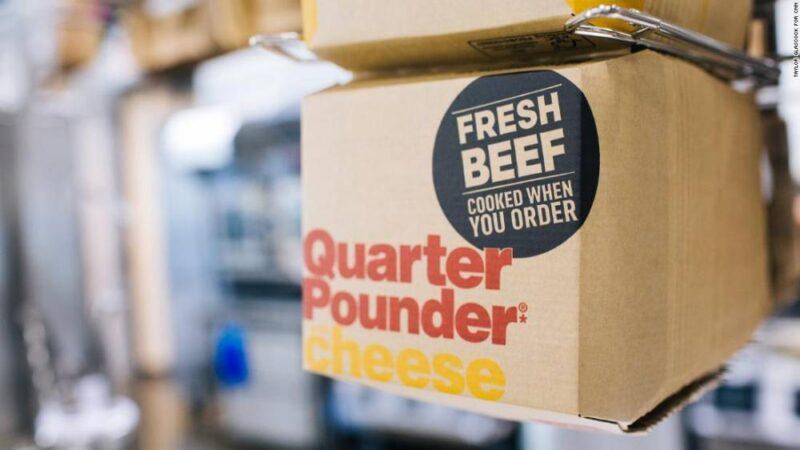
McDonald’s began serving Quarter Pounders made with fresh beef in its US stores in May 2018. (Taylor Glascock for CNN)During its first brainstorming session, the group came up with the idea for a hotter, juicier burger, Jasper said. But they didn’t land on fresh beef right away.
When Jasper, who at the time owned and operated 20 McDonald’s locations in Texas, returned to his team, he brainstormed with them, as well. They agreed that if possible, fresh beef in a Quarter Pounder “would be amazing.” So he set to work. Along with two others, Jasper spent three days in one of his kitchens, working about eight to ten hours each day.The goal was to cook up a hot, juicy burger without making major changes to the kitchen’s operating system and without slowing down the drive thru. With those parameters in mind, Jasper and his team had to deliberate over every detail — from the width and thickness of the patty to the amount of pressure cooks use to sear the burger without drying it out. “You change one parameter and it changes everything, and so you have to test over and over and over again,” Jasper said. A few one-off successes weren’t enough, he added. “You have to do something you can replicate. When you start doing the math, it’s millions of times a day across our system.”
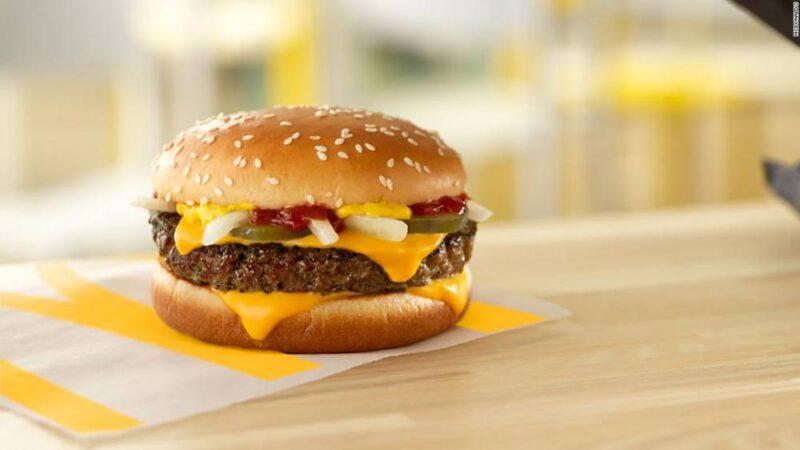
McDonald’s fresh beef Quarter Pounder. (McDonald’s) Once Jasper had figured out how to make the new ingredient work, he invited Gross — a sponsor of his food journey team — to one of his restaurants to try it out. When she tasted the fresh beef burger, Gross said, she went from being “a skeptic to a believer.”But others remained skeptical. When McDonald’s first started testing out its fresh beef burger in 2016, some franchisees reportedly said they were against the switch. One operator worried about “an uncaring employee doing something that puts the entire system at risk,” CNBC reported, citing a survey of about 27 franchisees who together owned and operated roughly 200 restaurants. They pointed to Chipotle, which took a major financial and reputational hit after E. coli outbreaks at its restaurants sickened customers, as a cautionary tale. “We are the lightning rod,” the franchisee said, according to CNBC. “Chipotle will be a walk in the park if we have an incident.”
Franchisees own and operate about 93% of McDonald’s restaurants, so getting them on board with the idea was crucial to its success.
Focus on safety
Franchise operators weren’t the only ones worried about food safety. That was Gross’s main concern about making the switch, too.”I lost a couple of winks of sleep over that one,” she said. Fresh beef is not inherently more difficult to prepare than frozen. But there are important differences between how fresh and frozen meat needs to be handled. Cooks must be mindful of contamination when handling fresh beef — basically, they need to make sure that raw burger juice doesn’t end up in other food or ingredients. For employees, the new ingredient meant re-learning a skill that may have become second nature, Gross said. “For years they were used to following the same procedures, and probably most of them could do it in their sleep,” she noted. “This was a big change.” With the guidance of a third-party food safety expert, McDonald’s put new practices into place. It instructed employees to wear blue gloves when handling the fresh beef, to make sure that other food products weren’t accidentally contaminated. Members of the corporate team made sure that employees at McDonald’s thousands of US restaurants had been trained correctly before the launch. To prepare a fresh beef burger, employees take the patty from the fridge and place it directly on a flat iron grill. While it’s cooking, the cook adds a pinch of salt and pepper to bring out flavor. The fresh burgers cook more quickly than frozen ones.
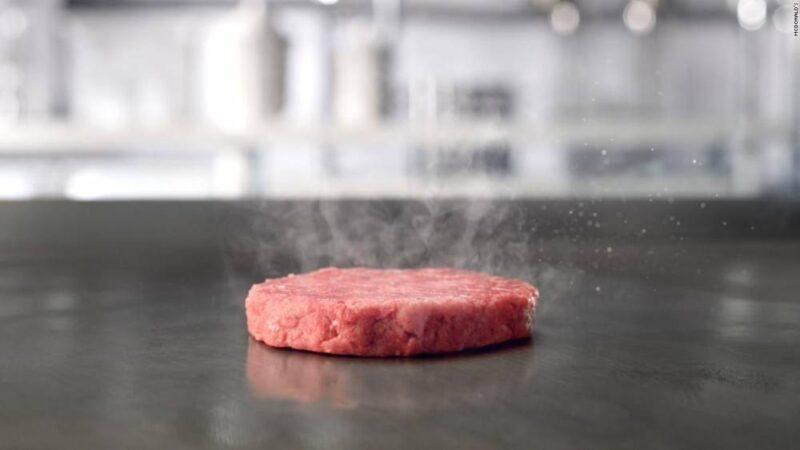
Cooks add a pinch of salt and pepper to bring out the fresh beef patty’s flavor. (McDonald’s)Changes also had to be made on the supply and distribution side.
Suppliers, used to sending frozen patties to McDonald’s, needed new packaging equipment and refrigeration capacity, among other things, to make sure the fresh beef was handled safely.Lopez Foods was the first supplier to sell fresh beef to McDonald’s. In order to accommodate the new product, Lopez had to build new lines. That meant new grinders and packaging equipment, among other tools. It converted one of its freezers into a refrigerator to store the meat. Switching from fresh to frozen also means Lopez has to be more nimble with its shipments. With a frozen product, they could plan far in advance for McDonald’s promotions that would increase the number of orders. With a perishable product, that planning time shrinks. And Lopez had to make all of these investments up front, with no guarantee that the changes would yield results. “It’s a big change for us, it’s a big change for the restaurant operationally. And there were questions around whether that could be executed,” said Ed Sanchez, CEO of Lopez Foods. “I had doubts along the way. But as it progressed along, it was less and less doubt. And there came a point to where it was crystal clear that we had to do this. The customer wanted it.” Fresh beef has a shorter shelf life than frozen, noted Dale Rogers, professor of logistics and supply chain management at Arizona State University’s W.P. Carey School of Business. This means that it needs to be brought from the suppliers to McDonald’s more quickly than frozen beef. Technological innovations, like sensors, can help make it easier for McDonald’s to ensure that the beef has been kept at the right temperature throughout its journey, said Rogers. Years ago, it would have been more difficult for McDonald’s to make sure that the meat is properly refrigerated all the way through.Still, it’s a major overhaul, he said. But If anyone can pull it off, it’s McDonald’s. “It’s a very disciplined culture,” he said. “McDonald’s has had the same suppliers for many, many years,” he added. “The relationship is extremely tight.” When it comes to managing its supply chain, “McDonald’s is one of the best of the best,” said Dale.To get suppliers on board, Gross started small. “A lot of that up front was really just getting people comfortable with the idea of a change this big, a move this bold for a company with our scale and our size,” Gross said.
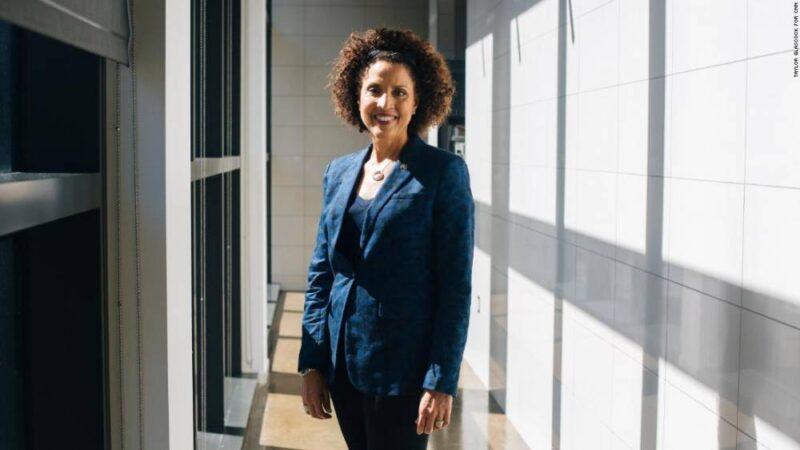
Gross initially balked at the idea of switching to fresh beef because of the massive changes it would require of the McDonald’s supply chain. But after a taste test, she changed her mind. (Taylor Glascock for CNN)After getting Lopez Foods on board, “it was time to bring on the next supplier,” said Gross. “We had all this learning from Lopez Foods that could very quickly be shared with supplier number two. Then they brought their production lines up and going, and they had a bunch of learning as well.” Sanchez is pleased with the results of the switch, he said. “We were satisfied with our investment and our return on investment,” he noted, adding, “it grew the business for us.” Getting its suppliers to work together is a “competitive advantage,” said Gross. “Their interests, like ours, is in the success of the McDonald’s system.”
Constant improvement
With its roughly 14,000 US locations and $38.5 billion in 2018 US sales, McDonald’s far outpaces its competition. Wendy’s, the next biggest burger chain according to QSR Magazine’s most recent annual list, closed out 2018 with about 6,700 locations and nearly $10 billion in US sales. Burger King’s 7,300 US locations also pulled in about $10 billion in US sales in 2018. With McDonald’s so far ahead, it doesn’t really need to worry about the competition, noted Sam Oches, editorial director of Food News Media at QSR magazine. What it does have to worry about is staying relevant. “You still want your customers to choose McDonald’s over Wendy’s and Burger King, but you also want your customers to choose McDonald’s over Five Guys,” Oches said. Better burger and fast casual chains started gaining momentum after the 2008 recession, when people were looking for spots that served higher quality meals than fast food chains but were less expensive than casual restaurants. By 2015, both the fast casual and better burger trends were well established. And burger chains like Wendy’s and In-N-Out, which built their reputations on serving fresh beef, were shouting out their message. “The more that the mass audience is hearing these stories about fresh beef and better burgers, the more that old frozen patty really wasn’t going to cut it,” said Kara Nielsen, a food trend expert based in Oakland, California. McDonald’s has experimented with high-quality and craft burgers, but pricey options haven’t worked well for the brand. And complicated burgers may add to prep time, which can mean longer lines and wait times in stores. Still, McDonald’s could have skipped this trend because of its massive scale.Speaking at the Sanford C. Bernstein Strategic Decisions Conference in May 2018, Easterbrook, still CEO of McDonald’s at the time, explained why it was so important to figure out a way to improve the chain’s burgers. “We’re a burger business at our heart,” he said. “If you want to really get the core business growing day in, day out, what changes can you make to the items you sell most of that customers would value?” By making it’s thickest burger, the Quarter Pounder, hotter and juicier, McDonald’s can give customers the most bang for their buck.
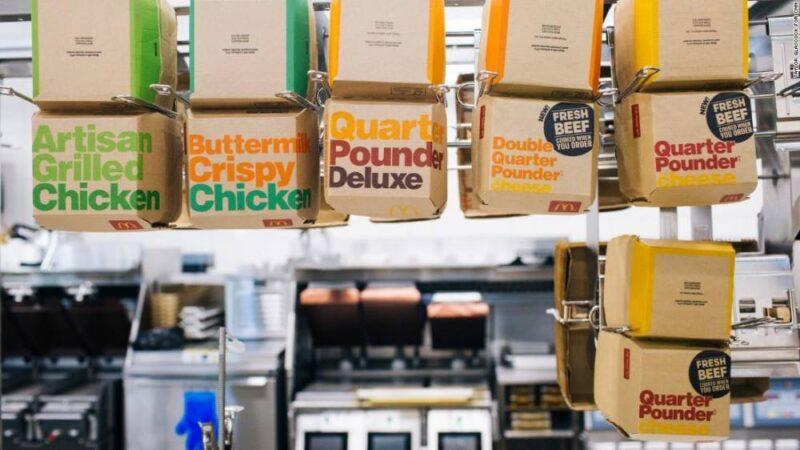
Cardboard sandwich containers in the McDonald’s test restaurant at their global headquarters. (Taylor Glascock for CNN)The fast food chain is constantly trying to improve its menu. “That includes enhancing or improving, making our iconic burgers and product offerings better too,” Gross said, noting that making the shift to fresh beef “was probably the most difficult change that we made since we made the move to all day breakfast.” For now, the risk is paying off. “The customers are voting by coming in and visiting us more often,” said Gross. “It all goes back to listening to the customer, and what the customer wants, and how their needs and wants are changing,” she said. “Then us being able to demonstrate that number one, we’re listening to them. Number two, we’re taking action and we’re making the moves that are important to them, even with our iconic food product.”
Source: edition.cnn.com

